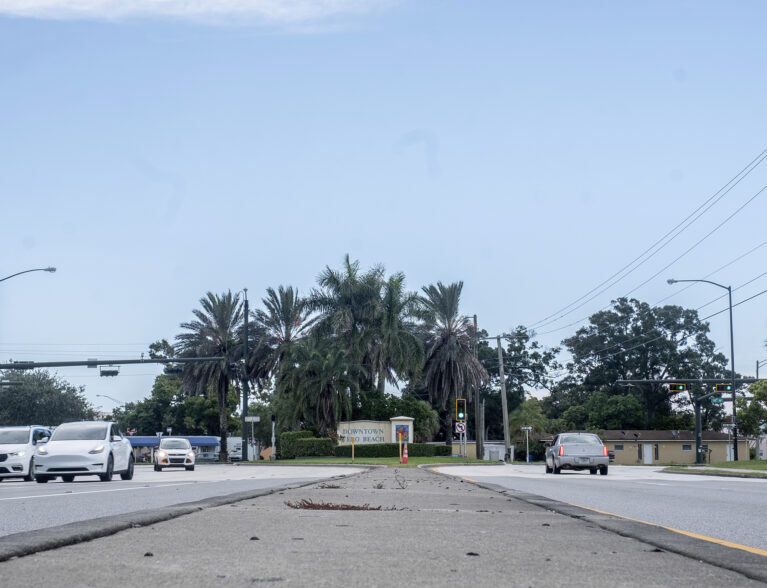
During the past year, the Vero Beach City Council approved the expenditure of more than $400,000 to hire multiple consultants to conduct studies needed in developing a master plan to improve the downtown area.
There was a traffic study, a retail marketing study, and even a study to review all the past downtown plans that went nowhere.
Then, just last month, the council closed out 2023 by voting to spend $175,000 to bring back renowned urban planner Andres Duany’s DPZ CoDesign firm to lead the charrette process, develop a concept design and present options that could be incorporated into the city’s vision for downtown.
Was this all a waste of money?
In some cases, yes – because the findings, such as those related to the wrongheaded proposal to reduce lanes along the Twin Pairs through downtown, told us what we already knew.
In others, probably – because it’s entirely possible that zoning, retail and marketing strategies which might prove magical in other cities, where the downtown areas are destinations for both locals and tourists, won’t work here.
And don’t need to.
Downtown Vero, which is far more active and attractive than it was a decade ago, isn’t that bad. It’s doing pretty well, actually, given all the business offices and limited number of dining, retail and nightlife offerings in the vicinity.
People go there.They go to the restaurants, bars, coffee houses, boutique shops and galleries along and adjacent to the 14th Avenue corridor. They go for breakfast, lunch and dinner. They go out there at night.
Is Downtown Vero as vibrant and alluring as it could be? No, but here’s a better question: Was it ever?
If so, how many of you are old enough to remember its heyday?
Sure, the downtown area could benefit from some sprucing up. It would be nice if more storefronts were open. It would be nicer if everyone felt welcome and safe while strolling through Pocahontas Park.
Anyone got ideas on how to make the vagrants that gather in and around the park – and sometimes accost pedestrians downtown – feel a bit more uncomfortable?
The city should study that.
The money would be better spent than the taxpayer dollars the council already has thrown at its dream of transforming the city’s downtown into something it has never been and, probably, never will be.
Remember: The city continues to push forward with Duany’s grand plan for developing the Three Corners site – at the west end of the 17th Street Bridge – into a dining, retail, social and recreational hub on the mainland’s riverfront.
The deadline for developers to submit their proposals is Feb. 1.
When the Three Corners does open, possibly as soon as the summer of 2028, those 34 acres along the Indian River Lagoon will become the place to go in Vero Beach. It will draw people away from Downtown Vero, which also competes for customers with the Ocean Drive business district.
Other successful downtowns cited by local revitalization proponents don’t confront the same challenge, particularly in a city of our size.
Therefore, even if our downtown area underwent a significant overhaul – spurred by the city’s efforts to adopt the zoning and density changes needed to encourage redevelopment that would include the construction of apartments and condominiums – it might not produce the desired Shangri-La.
Then there’s this: Any massive renovation and redevelopment would require the buy-in of downtown property owners, because, as Mayor John Cotugno said, “The city’s investment is the plan. We will provide the framework. It’s up to the property owners and businesses to execute the plan.”
According to city officials, though, almost the entire inventory of downtown properties is already leased, and for the highest rents ever.
So what’s the incentive?
Civic pride?
That’s what’s driving first-term City Councilman John Carroll, who said he “absolutely” believes Downtown Vero can and should be something special. He has been the most vocal and relentless advocate throughout this latest revitalization effort.
Carroll agrees that getting people to live downtown is crucial to the cause – because it would engender a sense of community – but he said the area also must provide something more to lure larger crowds.
Business offices, he said, are not attractions.
“For any renaissance to happen there, we need to improve walkability, but there needs to be something to walk to,” Carroll said, adding that the city “needs to change usages” away from office space in the downtown area.
As for the potential loss of people and business to the Three Corners development, which he supports, Carroll said downtown simply needs to create a different vibe – by the types of establishments that operate there and, perhaps, focusing on the historic and cultural aspects of the neighborhood.
He suggested a refurbished and more diversified downtown also might be able to attract a younger demographic, as is the case in other cities.
Certainly, Carroll’s passion is admirable, and there’s no reason to discourage him and others who want to make Downtown Vero better for all of us. We all should embrace that goal.
Who wouldn’t welcome more places to eat, drink and be merry when we go downtown? Who wouldn’t want to see cleaner sidewalks, hanging flower baskets and stylish trash receptables as we walk along 14th Avenue? Who wouldn’t prefer to not see a group of vagrants bathing in the Rotary Fountain?
But as we await Duany’s return to Vero Beach later this month, we’ve got to be realistic, too.
Downtown Vero doesn’t need to get that much better.
Indeed, it’s fair to wonder how much better it could get, regardless of the city’s investment.
“I’d give downtown a ‘C-plus,’” Cotugno said. “I’d like to get it to an ‘A.’”
He’s aiming too high, but that’s fine – as long as it’s the downtown property owners and business folks who cover the costs of trying to get there.
The city has spent enough.
More than it should have.



